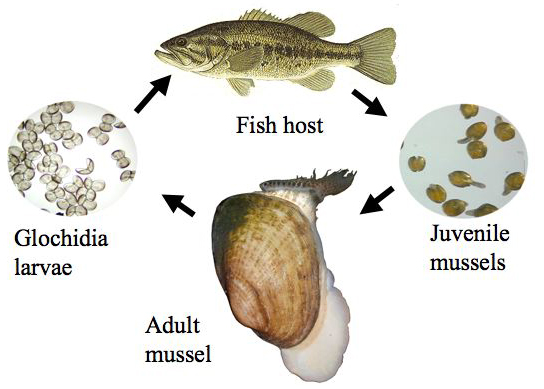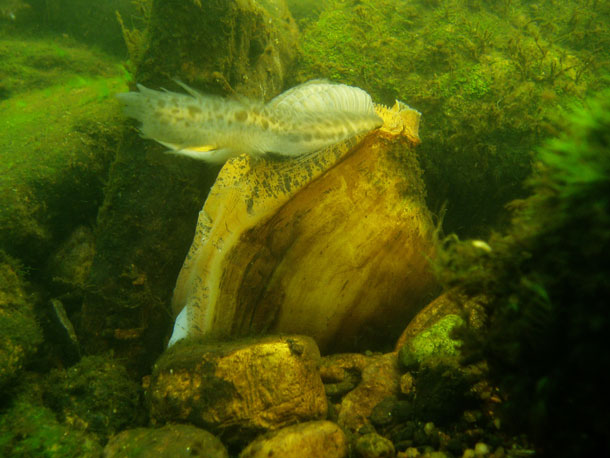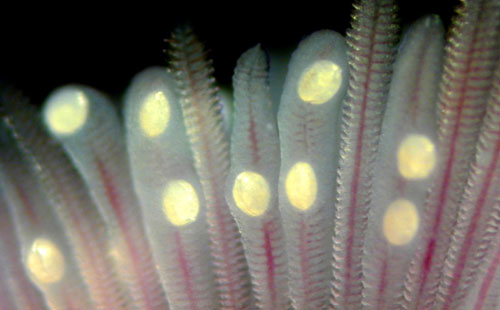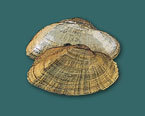How do mussels reproduce?
Freshwater mussels have an unusual and complex life cycle, which includes a brief, obligatory stage as a parasite on a fish. During the breeding season, females lay eggs and brood
them inside specialized chambers in their gills called a marsupia. Males
release sperm into the open water, which is then drawn into the females
through their siphons. The sperm fertilizes the eggs. Inside the
female mussel, fertilized eggs develop into microscopic larvae known as glochidia.
 And
this is where the fish hosts come into play – and things begin to get interesting.
And
this is where the fish hosts come into play – and things begin to get interesting.
Most mussels need to “infect” a host fish with glochidia to facilitate glochidia metamorphosing into juveniles.The method of host infection greatly varies among mussel
species. Some mussels simply release glochidia into the water where they must haphazardly come into contact with the appropriate fish host as it swims by. The process is more intricate and direct in other species.
For example, females in the mussel genus Lampsilis have an extension
of the mantle tissue that strikingly resembles a small fish. The mussel
displays this tissue outside its shell between the valves and twitches it repetitively
to attract its predaceous fish host – like a fishing lure. While attempting to eat the lure, the marsupial gills of the female mussel are ruptured, and the glochidia come loose and attach themselves to the fish - the host fish is infected. Other mussel species release small structures containing glochidia called
conglutinates. These are released into the water where they slowly sink to the river bed. Conglutinates look like
prey items to the host fish; the host fish are infested when they attempt to
eat them.

Lampsilis' display attracts host fish - Paul L. Freeman,
The Nature Conservancy
Lampsilis ornata (Pocketbook) from Coosa River, Alabama
Once the glochidia are released from the female, they must attach to
the gills or the fins of the right fish host and encyst to complete development. Otherwise
they won’t survive. The process of encystment on the fish host occurs as the
tissue of the fish grows over the glochidia. Metamorphosis takes
place within days or weeks, depending on species and temperature. Glochidia transform
into microscopic juveniles and drop off. If by chance they settle into
suitable habitat, a new mussel bed is created.
It’s an astonishing display of evolutionary adaptation, going on just under the
surface of local streams around the globe.

Photo by M.C. Barnhart
Glochidia of Lampsilis encapsulated on the gills
of largemouth bass. Glochidia are parasites but they usually do no harm to the
host. The glochidium clamps on, and the epithelial cells of the gill then
migrate to form a capsule around it. This structure is often erroneously
called a cyst, but technically cysts are structures made by a parasite, while
capsules are made by a host.





